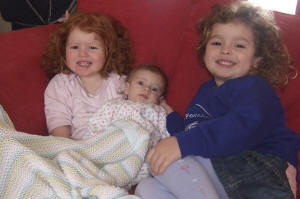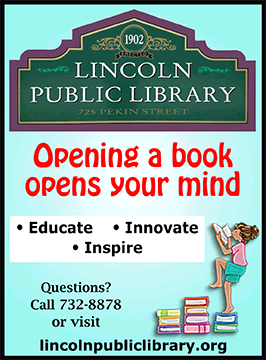Healthy babies born in Britain after scientists used DNA from three
people to avoid genetic disease
[July 17, 2025]
By MARIA CHENG and LAURA UNGAR
LONDON (AP) — Eight healthy babies were born in Britain with the help of
an experimental technique that uses DNA from three people to help
mothers avoid passing devastating rare diseases to their children,
researchers reported Wednesday.
Most DNA is found in the nucleus of our cells, and it's that genetic
material — some inherited from mom, some from dad — that makes us who we
are. But there's also some DNA outside of the cell's nucleus, in
structures called mitochondria. Dangerous mutations there can cause a
range of diseases in children that can lead to muscle weakness,
seizures, developmental delays, major organ failure and death.
Testing during the in vitro fertilization process can usually identify
whether these mutations are present. But in rare cases, it's not clear.
Researchers have been developing a technique that tries to avoid the
problem by using the healthy mitochondria from a donor egg. They
reported in 2023 that the first babies had been born using this method,
where scientists take genetic material from the mother's egg or embryo,
which is then transferred into a donor egg or embryo that has healthy
mitochondria but the rest of its key DNA removed.
The latest research “marks an important milestone,” said Dr. Zev
Williams, who directs the Columbia University Fertility Center and was
not involved in the work. “Expanding the range of reproductive options …
will empower more couples to pursue safe and healthy pregnancies.”
Using this method means the embryo has DNA from three people — from the
mother's egg, the father's sperm and the donor's mitochondria — and it
required a 2016 U.K. law change to approve it. It is also allowed in
Australia but not in many other countries, including the U.S.

Experts at Britain’s Newcastle University and Monash University in
Australia reported in the New England Journal of Medicine Wednesday that
they performed the new technique in fertilized embryos from 22 patients,
which resulted in eight babies that appear to be free of mitochondrial
diseases. One woman is still pregnant.
One of the eight babies born had slightly higher than expected levels of
abnormal mitochondria, said Robin Lovell-Badge, a stem cell and
developmental genetics scientist at the Francis Crick Institute who was
not involved in the research. He said it was still not considered a high
enough level to cause disease, but should be monitored as the baby
develops.
Dr. Andy Greenfield, a reproductive health expert at the University of
Oxford, called the work “a triumph of scientific innovation,” and said
the method of exchanging mitochondria would only be used for a small
number of women for whom other ways of avoiding passing on genetic
diseases, like testing embryos at an early stage, was not effective.
Lovell-Badge said the amount of DNA from the donor is insignificant,
noting that any resulting child would have no traits from the woman who
donated the healthy mitochondria. The genetic material from the donated
egg makes up less than 1% of the baby born after this technique.
[to top of second column]
|

In this photo provided by the Lily Foundation, Rosie and Katie
Merritt, of England, hold their sister, Lily, who died of a
mitochondrial disease in 2006 at 8-months old. (Lily Foundation via
AP)
 “If you had a bone marrow transplant
from a donor … you will have much more DNA from another person,” he
said.
In the U.K., every couple seeking a baby born through donated
mitochondria must be approved by the country’s fertility regulator.
As of this month, 35 patients have been authorized to undergo the
technique.
Critics have previously raised concerns, warning that it's
impossible to know the impact these sorts of novel techniques might
have on future generations.
“Currently, pronuclear transfer is not permitted for clinical use in
the U.S., largely due to regulatory restrictions on techniques that
result in heritable changes to the embryo," Williams, of Columbia,
said in an email. ”Whether that will change remains uncertain and
will depend on evolving scientific, ethical, and policy
discussions."
For about a decade, Congress has included provisions in annual
funding bills banning the Food and Drug Administration from
accepting applications for clinical research involving techniques,
“in which a human embryo is intentionally created or modified to
include a heritable genetic modification.”
But in countries where the technique is allowed, advocates say it
could provide a promising alternative for some families.
Liz Curtis, whose daughter Lily died of a mitochondrial disease in
2006, now works with other families affected by them. She said it
was devastating to be told there was no treatment for her
eight-month-old baby and that death was inevitable.
She said the diagnosis “turned our world upside down, and yet nobody
could tell us very much about it, what it was or how it was going to
affect Lily.” Curtis later founded the Lily Foundation in her
daughter’s name to raise awareness and support research into the
disease, including the latest work done at Newcastle University.
“It’s super exciting for families that don’t have much hope in their
lives,” Curtis said.
___
Ungar reported from Erie, Pennsylvania.
All contents © copyright 2025 Associated Press. All rights reserved
 |